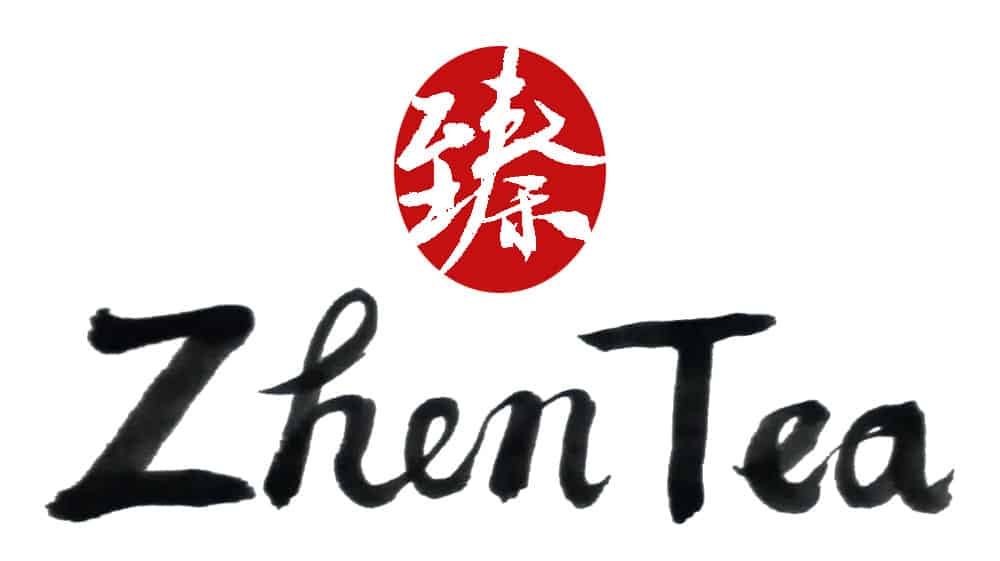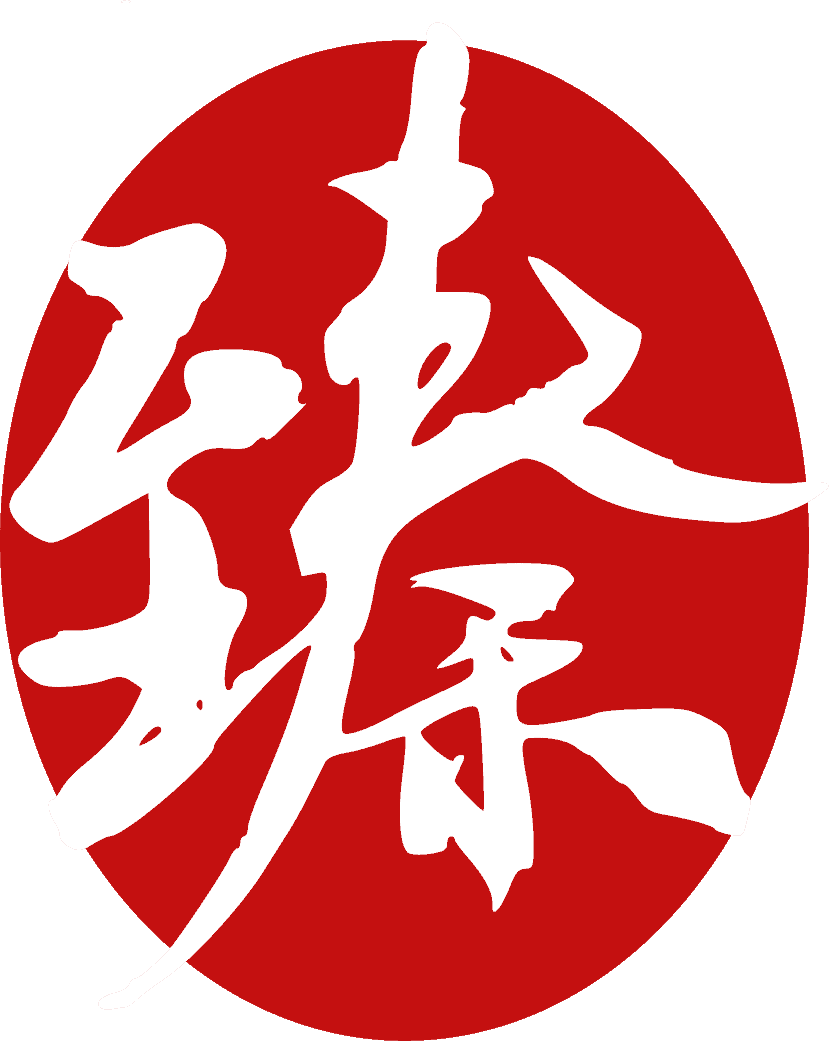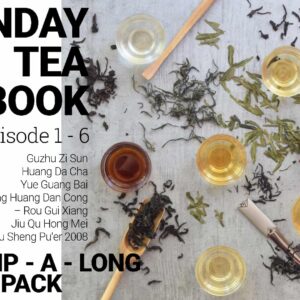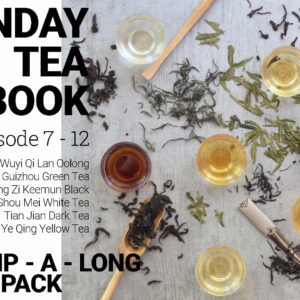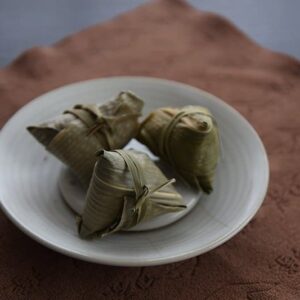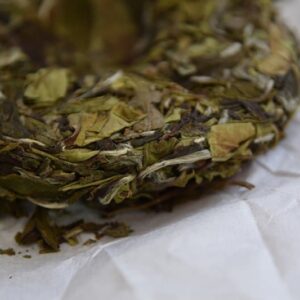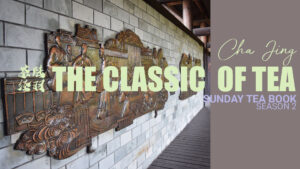Please check out the Sunday Tea Book videos below for additional information about the Classic of Tea.
Sip-a-long with us with today’s tea or grab enough for the whole season and save!
-
Sale!
The Classic of Tea Sip-a-Long 6 Pack Season 2 Episode 1 – 6
Original price was: $93.00.$69.75Current price is: $69.75. -
Sale!
The Classic of Tea Sip-a-Long 6 Pack Season 2 Episode 7 – 12
Original price was: $53.50.$41.00Current price is: $41.00. -
Zong Zi Keemun Black Tea
$9.00 – $32.00
Chapter 5 – Boil
When toasting a tea cake, don’t toast it facing the wind. The fire is unstable causing the tea cake to be toasted unevenly. One should hold the tea cake close to the fire, turning so both sides are evenly toasted. When the tea cake starts to show roasting patterns that look like the back of a shrimp and clam, stay away from the fire 15cm (5 cun). Wait till the curled surface of the tea cake slowly releases, and repeat the step above one more time. If the tea cake was dried by roasting, it has to be roasted till the water fully evaporates; if the tea cake was dried by the sun, toast it until it’s soft.
Sip-a-long with us with today’s tea or grab enough for the whole season and save!
-
Shou Mei
$29.00 – $269.00 -
Sale!
The Classic of Tea Sip-a-Long 6 Pack Season 2 Episode 1 – 6
Original price was: $93.00.$69.75Current price is: $69.75. -
Sale!
The Classic of Tea Sip-a-Long 6 Pack Season 2 Episode 7 – 12
Original price was: $53.50.$41.00Current price is: $41.00.
When the tea starts to be made, if it’s tender new shoots get crushed when they are still hot out of the steamer, the leaves will be smooshed while the buds will keep intact. Even crushed by the strongest man, the buds won’t be smooshed. It’s just like tiny beads can escape the strongest man’s fingers. After the tea is crushed, the buds are without “bones”. After toasting, the buds will be soft like a baby’s arm.
After toasting, put the tea in the paper bag while it’s still hot so that the aroma won’t escape. Wait until it cools down then mill it into powder.
The best fuel to boil tea is charcoal, then hardwood. Charcoal that was contaminated with oil or other aromas when it was made, wood containing oil, or rotten wood can’t be used for boiling tea. Ancient people think the things that were boiled with these kinds of wood have the undesired flavor of wood. This is correct.
The best water for boiling tea is from the mountains, then from big rivers, well water is the worst. Among the water from the mountains, those that drip from stalactites or run steadily among the rocks are the best. It’s better not to drink white water that runs fiercely like a waterfall. Drinking such water for a long period of time will cause neck diseases. The ponds in the mountains, though they look clear, the water is not flowing. Especially from summer to autumn, there could be accumulated contamination from animals. If drinking it, we can first drain it to clear out the stale water, and when the new water emerges, get that water. If using water from big rivers, be sure to take the water from somewhere far from residences. If using well water, be sure to take the water from the often-used wells.
Now boil the water. When bubbles the size of fish eyes started to emerge, accompanied by a faint sound, this is the first boil. When the edge of the water starts to have emerging bubbles like a string of pearls, this is the second boil. When the water is bubbling fiercely like raging ocean waves, it’s the third boil. The water will be overboiled if continued and no longer suitable for drinking.
When the water is at first boil, add the salt proportionally according to the water quantity. Take some out to test the salt level, and throw away the rest of the test water. Make sure it’s not too salty, otherwise there will only be the flavour of salt water. At the second boil, take a scoop of water out. Use the bamboo tong (竹夹) stir in circle motion in the boiling water. Use a ze (则,spoon) to measure the tea powder and put it in the middle of the swirl. Wait till the water boils like the the raging ocean waves with splashy bubbles, put the scooped water back in to cease the boiling, and promote tea foam. When serving the tea to the bowl, be sure to make the foam even in the bowl. Tea foam is the essence of tea. The thin foam is called mo (沫), thick foam is called bo (饽), and light and fine foam is called hua (花). Hua is like the date flower floating on the round pond, like the new grown duckweed on a twisty river bed or wetland, it also looks like the light fish scale, like cloud on a sunny day. Mo is like the green moss on the water, or like the fallen crythantemun petals in the wine glass. Bo is thick foam caused by the sunk tea powder when boiled. It’s bright white like snow. In Chuan Fu, it’s described as bright like snow, radiant like spring flowers. It’s truely so.
After the first boil, get rid of the biotite-like water film on the top, because its taste is off. The first scoop of water is called juan yong (隽永). Put it in a bowl (shu yu, 熟盂) for later use to cease the boil and promote tea foam. After that, the first, second, and third bowls of tea are all inferior to juan yong. The fourth and fifth bowls, are not worth drinking unless you are extremely thirsty.
Usually, when boiling a liter of water, it serves 5 bowls of tea. They should be enjoyed at one time while hot because the substance is going to sink and the foam is on the top. When it’s cold, the foam is going to disappear. You won’t have it when drinking the tea. Tea’s property is minimal, therefore don’t add too much water. Too much water will make the tea too light and flavorless. It’s just like a full bowl of good tea, the taste gets inferior when enjoyed halfway, not to mention if it’s made with too much water.
The tea liquor is light yellow. The aroma is so delightful. Those that taste sweet are jia (槚), and the ones that are not sweet but bitter are chuan (荈). Those that are bitter at first sip but have lingering sweetness are tea (cha, 茶).
